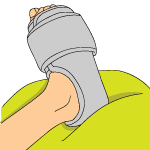What is a Heel Spur?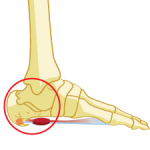
A Heel Spur is a bony growth located on the underside of the heel bone. Heel Spurs are often associated with Plantar Fasciitis, but can occur without Plantar Fasciitis being present. Heel Spurs are often mistaken for Plantar Fasciitis because the signs and symptoms are so similar.
This page explains the difference between Heel Spurs and Plantar Fasciitis: http://plantar-fasciitis.com/plantar-fasciitis-vs-heel-spurs.php?REF=17PV232.289
Heel Spurs are also known as Calcaneal Spurs or bone spurs (osteophytes).
Causes
Common causes of Heel Spurs include:
- Repeated stress to the bottom of the heel (Ex. running, standing on your feet all day)
- Being overweight
- Improper footwear
- Gait issues
- Osteoarthritis
- Plantar Fasciitis
Signs & Symptoms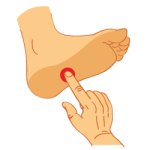
- Pain in bottom of heel
- Pain when attempting to bear weight on the foot
- Bottom of heel is tender to the touch
- Pain that worsens after physical activity
- Pain that flares up during first few steps in the morning
Some people with Heel Spurs may never experience any signs or symptoms, causing the Heel Spurs to go undetected.
Treatment
The RICE method (Rest, Ice, Compression, Elevation) can be followed to help control your symptoms. Resting is a good idea as this will prevent further irritation in the heel area and help to lessen symptoms. Ice should be used along with Compression to relieve the pain and any swelling you may be experiencing. Elevating your foot above your heart will work to alleviate the internal inflammation, deep down in the soft tissue.
NSAIDs
Non-steroidal anti-inflammatory drugs such as Aleve (naproxen) and Advil (ibuprofen) can help relieve your pain and inflammation. It should be noted, however, that painkillers should be limited to times when you’re off your feet. since painkillers block the pain signal, they make you unaware of any further damage you may be doing during physical activity, which is why taking them when you’re being active should be avoided.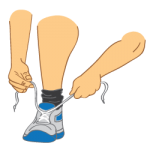
Proper Footwear
Wearing the right shoes can make a huge difference to your feet. Make sure your shoes provide proper support for the heel and ball of your foot, as these are the two areas that balance your weight. Don’t wear shoes that are too tight, too loose, or worn out. Avoid wearing high heels.
Weight Loss
If you are overweight, this could be causing unneeded stress on the heel of your foot, which may have resulted in your Heel Spur. Losing weight will help relieve some of the strain on your heel, and may help clear up your symptoms.
Exercises
Exercises designed to stretch and strengthen the foot and lower leg can help relieve your symptoms.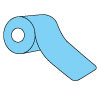
Taping
Taping the heel can help to provide stability, support and protection. Tape also applies light compression when applied.
Surgery
Surgery to remove the Heel Spur should only be considered as a last resort if there has been no success with conservative treatment methods.
